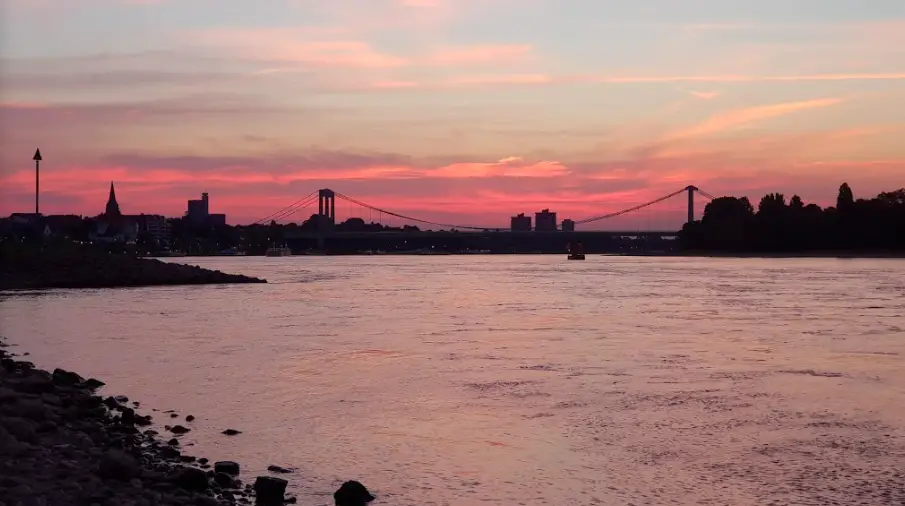How can I explore the history of the Berlin Wall?
Post ByAdequate Travel
Summary
Are you curious about the Berlin Wall and its rich history? Exploring the history of the Berlin Wall can be an incredibly rewarding experience. Discover the fascinating facts about one of the world's most iconic dividing walls through a range of resources available online.
Stay informed about any travel restrictions or travel rules in place, as they may vary depending on your destination within the country.
Exploring the history of the Berlin Wall can be a fascinating journey into understanding the political, social, and cultural impacts of this significant barrier. The following are detailed steps and examples of how you can explore its history:1. Read books and articles:Start by researching books and articles that provide historical context and in-depth information about the Berlin Wall. Look for well-researched titles that cover different aspects such as its construction, life in divided Berlin, high-profile escapes, and the eventual fall of the wall. Here are some notable books and articles to consider:- "The Berlin Wall: A World Divided, 1961-1989" by Frederick Taylor- "Iron Curtain: The Crushing of Eastern Europe 1944-1956" by Anne Applebaum- "The Berlin Wall: 13 August 1961 - 9 November 1989" by Peter Wykeham2. Visit museums and memorials:Exploring museums and memorials dedicated to the Berlin Wall offers a first-hand experience of its history. These sites often feature exhibits, artifacts, interactive displays, and documentaries that provide a comprehensive overview of the wall's significance. Here are some notable museums and memorials in Berlin:- The Berlin Wall Memorial: Located near Bernauer Strasse, this memorial preserves a section of the original wall, watchtowers, and a documentation center.- The Checkpoint Charlie Museum: This museum focuses on the history of the wall, escapes, and the Cold War in general.- The DDR Museum: While not exclusively about the wall, this museum provides insights into daily life in East Germany, which helps in understanding the context of the wall's construction.3. Take a guided tour:Consider taking a guided tour of the Berlin Wall sites to gain a deeper understanding of its history. Expert tour guides often offer valuable insights and anecdotes, guiding you through significant locations while sharing historical context. Some examples of guided tours include:- The "Berlin Wall and Cold War" tour offered by Insider Tour Berlin, which covers iconic sites such as the Brandenburg Gate and the remaining sections of the wall.- Bike tours like the "Berlin Wall Bike Tour" allow you to explore a larger area and visit various sites, including the East Side Gallery (a preserved section of the wall adorned with murals).4. Watch documentaries and films:Documentaries and films can provide a visual and emotional understanding of the Berlin Wall's impact. Many documentaries feature real-life stories, interviews, and raw footage depicting the conditions in divided Berlin. Some recommended documentaries and films include:- "The Wall" (2017): A documentary showcasing the personal stories of those affected by the wall, including escapees and guards.- "Wings of Desire" (1987): A fictional film that captures the atmosphere and emotions of a divided Berlin through the perspective of a guardian angel.5. Engage with online resources:Several websites and online platforms offer extensive resources on the history of the Berlin Wall. These platforms often provide photographs, videos, personal testimonies, and interactive maps. Some notable online resources include:- The Berlin Wall Archive by the Center for Contemporary Historical Research (ZZF) allows you to explore a vast collection of documents, interviews, and photographs related to the wall.- The Berlin Wall Memorial website offers virtual exhibits, photo galleries, and detailed information about the wall's history.By following these steps and utilizing these examples, you can deeply explore the history of the Berlin Wall and gain a comprehensive understanding of its significance in German and international history.
Exploring the history of the Berlin Wall can be a fascinating journey into understanding the political, social, and cultural impacts of this significant barrier. The following are detailed steps and examples of how you can explore its history:1. Read books and articles:Start by researching books and articles that provide historical context and in-depth information about the Berlin Wall. Look for well-researched titles that cover different aspects such as its construction, life in divided Berlin, high-profile escapes, and the eventual fall of the wall. Here are some notable books and articles to consider:- "The Berlin Wall: A World Divided, 1961-1989" by Frederick Taylor- "Iron Curtain: The Crushing of Eastern Europe 1944-1956" by Anne Applebaum- "The Berlin Wall: 13 August 1961 - 9 November 1989" by Peter Wykeham2. Visit museums and memorials:Exploring museums and memorials dedicated to the Berlin Wall offers a first-hand experience of its history. These sites often feature exhibits, artifacts, interactive displays, and documentaries that provide a comprehensive overview of the wall's significance. Here are some notable museums and memorials in Berlin:- The Berlin Wall Memorial: Located near Bernauer Strasse, this memorial preserves a section of the original wall, watchtowers, and a documentation center.- The Checkpoint Charlie Museum: This museum focuses on the history of the wall, escapes, and the Cold War in general.- The DDR Museum: While not exclusively about the wall, this museum provides insights into daily life in East Germany, which helps in understanding the context of the wall's construction.3. Take a guided tour:Consider taking a guided tour of the Berlin Wall sites to gain a deeper understanding of its history. Expert tour guides often offer valuable insights and anecdotes, guiding you through significant locations while sharing historical context. Some examples of guided tours include:- The "Berlin Wall and Cold War" tour offered by Insider Tour Berlin, which covers iconic sites such as the Brandenburg Gate and the remaining sections of the wall.- Bike tours like the "Berlin Wall Bike Tour" allow you to explore a larger area and visit various sites, including the East Side Gallery (a preserved section of the wall adorned with murals).4. Watch documentaries and films:Documentaries and films can provide a visual and emotional understanding of the Berlin Wall's impact. Many documentaries feature real-life stories, interviews, and raw footage depicting the conditions in divided Berlin. Some recommended documentaries and films include:- "The Wall" (2017): A documentary showcasing the personal stories of those affected by the wall, including escapees and guards.- "Wings of Desire" (1987): A fictional film that captures the atmosphere and emotions of a divided Berlin through the perspective of a guardian angel.5. Engage with online resources:Several websites and online platforms offer extensive resources on the history of the Berlin Wall. These platforms often provide photographs, videos, personal testimonies, and interactive maps. Some notable online resources include:- The Berlin Wall Archive by the Center for Contemporary Historical Research (ZZF) allows you to explore a vast collection of documents, interviews, and photographs related to the wall.- The Berlin Wall Memorial website offers virtual exhibits, photo galleries, and detailed information about the wall's history.By following these steps and utilizing these examples, you can deeply explore the history of the Berlin Wall and gain a comprehensive understanding of its significance in German and international history.
Suggested Questions
- Hexenturm, Idstein: Horror Story, History & Paranomial Activities
- Königssee, Berchtesgaden: Horror Story, History & Paranomial Activities
- St. Jakobskirche, Rothenburg ob der Tauber: Horror Story, History & Paranomial Activities
- Schloss Moyland, Bedburg-Hau: Horror Story, History & Paranomial Activities
- Weesenstein Castle, Müglitztal: Horror Story, History & Paranomial Activities
- Schloss Neuschwanstein, Schwangau: Horror Story, History & Paranomial Activities











